
President Ronald Reagan shot on March 30, 1981
President Ronald Reagan shot On March 30, 1981, President Ronald Reagan is shot in the chest outside a Washington, D.C., hotel by a deranged drifter named John Hinckley Jr.
The president had just finished addressing a labor meeting at the Washington Hilton Hotel and was walking with his entourage to his limousine when Hinckley, standing among a group of reporters, fired six shots at the president, hitting Reagan and three of his attendants. White House Press Secretary James Brady was shot in the head and critically wounded, Secret Service agent Timothy McCarthy was shot in the side, and District of Columbia policeman Thomas Delahaney was shot in the neck. After firing the shots, Hinckley was overpowered and pinned against a wall, and President Reagan, apparently unaware that he’d been shot, was shoved into his limousine by a Secret Service agent and rushed to the hospital.
The president was shot in the left lung, and the .22 caliber bullet just missed his heart. In an impressive feat for a 70-year-old man with a collapsed lung, he walked into George Washington University Hospital under his own power. As he was treated and prepared for surgery, he was in good spirits and quipped to his wife, Nancy, “Honey, I forgot to duck”, and to his surgeons, “Please tell me you’re Republicans.” Reagan’s surgery lasted two hours, and he was listed in stable and good condition afterward.
The next day, the president resumed some of his executive duties and signed a piece of legislation from his hospital bed. On April 11, he returned to the White House. Reagan’s popularity soared after the assassination attempt, and at the end of April he was given a hero’s welcome by Congress. In August, this same Congress passed his controversial economic program, with several Democrats breaking ranks to back Reagan’s plan. By this time, Reagan claimed to be fully recovered from the assassination attempt. In private, however, he would continue to feel the effects of the nearly fatal gunshot wound for years.
Of the victims of the assassination attempt, Secret Service agent Timothy McCarthy and D.C. policeman Thomas Delahaney eventually recovered. James Brady, who nearly died after being shot in the eye, suffered permanent brain damage. He later became an advocate of gun control, and in 1993 Congress passed the “Brady Bill,” which established a five-day waiting period and background checks for prospective gun buyers. President Bill Clinton signed the bill into law.
After being arrested on March 30, 1981, 25-year-old John Hinckley was booked on federal charges of attempting to assassinate the president. He had previously been arrested in Tennessee on weapons charges. In June 1982, he was found not guilty by reason of insanity. In the trial, Hinckley’s defense attorneys argued that their client was ill with narcissistic personality disorder, citing medical evidence, and had a pathological obsession with the 1976 film Taxi Driver, in which the main character attempts to assassinate a fictional senator. His lawyers claimed that Hinckley saw the movie more than a dozen times, was obsessed with the lead actress, Jodie Foster, and had attempted to reenact the events of the film in his own life. Thus the movie, not Hinckley, they argued, was the actual planning force behind the events that occurred on March 30, 1981.
The verdict of “not guilty by reason of insanity” aroused widespread public criticism, and many were shocked that a would-be presidential assassin could avoid been held accountable for his crime. However, because of his obvious threat to society, he was placed in St. Elizabeth’s Hospital, a mental institution. In the late 1990s, Hinckley’s attorney began arguing that his mental illness was in remission and thus had a right to return to a normal life. Beginning in August 1999, he was allowed supervised day trips off the hospital grounds and later was allowed to visit his parents once a week unsupervised. The Secret Service voluntarily monitors him during these outings. If his mental illness remains in remission, he may one day be released.
History Channel / Wikipedia / Encyclopedia Britannica / FBI / PBS / TIME 
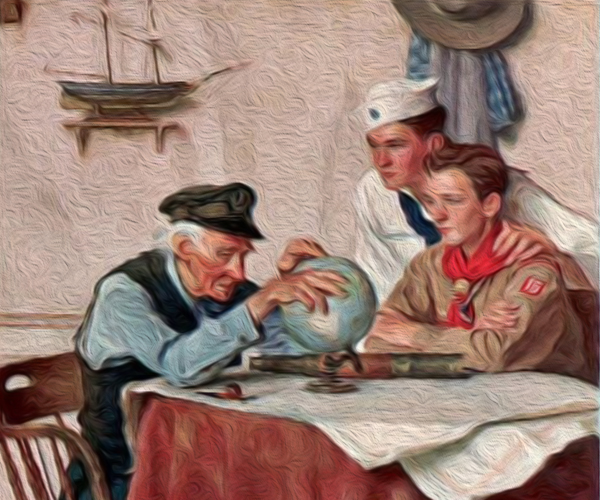
Understanding Military Terminology - Mounting Area
(DOD) A general locality where assigned forces of an amphibious or airborne operation, with their equipment, are assembled, prepared, and loaded in ships and/or aircraft preparatory to an assault. See also embarkation area. Joint Publications 3-02.1 (Amphibious Embarkation and Debarkatio)

The Old Salt’s Corner
“A Sailors Prayer”
Now I lay me down to sleep,
I pray thee Lord my soul to keep.
Grant no other sailor take
My shoes and socks before I wake.
Lord guard me in my slumber,
And keep my hammock on its number.
May no clues nor lashing break
And let me down before I wake.
Keep me safely in the sight
And grant no fire drill tonight.
And in the morning let me wake,
Breathing scents of sirloin steak.
God protect me in my dreams,
And make this better than it seems.
Grant the time may swiftly fly
When myself shall rest on high.
In a snowy feather bed,
Where I long to rest my head.
Far away from all these scenes
And the smell of half-done beans.
Take me back into the land
Where they don't scrub down with sand.
Where no demon Typhoon blows
Where women wash the clothes.
God thou knowest all my woes,
Feed me in my dying throes.
Take me back, I'll promise then
Never to leave home again.
~ Author unknow
(continued next week)

“I’m Just Sayin”
“The best way to get the right answer on the Internet is not to ask a question, it’s to post the wrong answer.”
~ Cunningham's law

“Thought for the Day”
“Give me but a firm spot on which to stand and I shall move the earth.”
~ Archimedes

“What I Have Learned”
“I have learned that success is to be measured not so much by the position that one has reached in life as by the obstacles which he has had to overcome while trying to succeed.”
~ Booker T. Washington

Bizarre News (we couldn’t make up stuff this good – real news story)

A man has been fined €70 (£54) for burping too loudly in a Vienna park after feasting on a kebab.
The ticket, posted on his Facebook page, says he offended “public decency with a loud belch next to a police officer”.
Mr Mehic said he had eaten the kebab and was enjoying a Sunday stroll in the city's Prater park when he burped and “felt a hand on his shoulder”.
According to his Facebook post, the officer was not impressed when he asked why he was not dealing with more serious matters.
SKY News (02/23/2016)
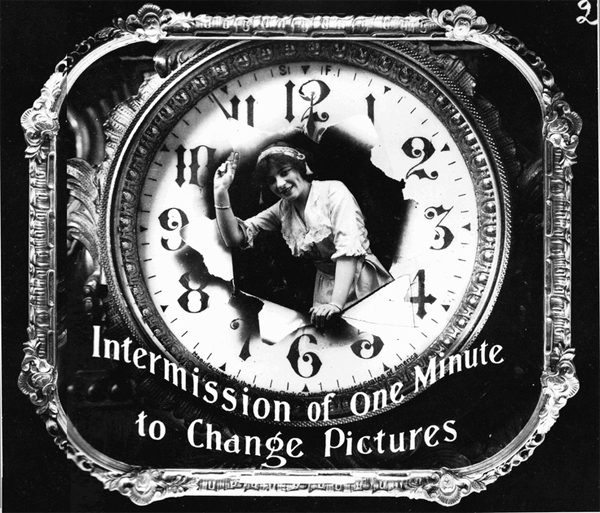
Mr. Answer Man Please Tell Us: What Happens to Films Selected for Preservation by the Library of Congress?
Last year, the National Film Preservation Board announced its latest slate of movies selected for permanent safekeeping by the Library of Congress. As always, the picks varied widely. The National Film Registry’s class of 2015 includes Ghostbusters (1984), Being There (1979), The Shawshank Redemption (1994), George Melford's Spanish-language version of Dracula (1931), a five-second recording of a sneeze filmed by Thomas Edison, and the mid-century health class staple The Story of Menstruation (1946).
Originally established in 1988, the National Film Preservation Act tasks the board with selecting American films that are “culturally, historically, or aesthetically" significant. They can pick up to 25 per year, and the movies must be at least 10 years old. The National Film Preservation Board is made up of representatives from a number of industry organizations, including the Academy of Motion Picture Arts and Sciences, the Directors Guild of America, and the National Society of Film Critics. With the new selections, there are 675 films in the registry.
Selection for the registry is an honor, of course, but what does it mean beyond that? How does the Library of Congress, the U.S. legislature’s storage agency for documents and media, go about preserving movies?
According to Steve Leggett, program coordinator for the National Film Preservation Board, selection implores the Library of Congress to get the best possible copy of the film in its original format and store it in their vaults at the National Audio-Visual Conservation Center in Culpeper, Virginia. This ensures the film will be available to future generations.
For Hollywood movies, the process is usually pretty easy. “We simply ask the studio to donate a copy”, Leggett tells mental_floss. In some cases, that isn’t even necessary. The Library of Congress has more than a million films on file, many of them sent by studios or filmmakers for the sake of copyright registry. When the original Star Wars was selected in 1989, Leggett says, congressional librarians simply checked that the 35 millimeter print submitted with Lucasfilm’s copyright application was in good shape. It was, so no further action was needed.
For older and more esoteric selections like newsreels, silent films, documentaries, and early technical achievements in filmmaking, Leggett says the library often seeks out a copy from the community of preservationists. Universities, private foundations, and hobbyists that preserve old films might get a call from the Library of Congress if they have a good copy of a National Film Registry selection. In rare cases, the library will barter for the film, using redundant materials on its shelves. Other times, it will make a copy or pay the archivist to make a new 35 millimeter copy for them. The Culpeper facility stores nitrate prints, the original film stock for many early movies, in specialty lockers because the material is highly volatile and flammable.
Silent films can be tricky because studios often released, revised, and then re-released versions of the film. When one is selected, Library of Congress archivists collect as many aspects and versions of the film as they can, which might mean contacting several studios and archivists.
Of particular challenge last year was the induction of Symbiopsychotaxiplasm: Take One, William Greaves’s quasi-documentary of his 1968 theatrical project staged in Central Park. The film was screened often through the years, as Greaves gained a cult following. It was released on DVD in 2006, but the National Film Preservation Act specified that the library should seek a copy in the original format, which it didn’t have. Leggett says Greaves’ 1968 original cut was “lost”, but the library worked with the late filmmaker's estate to create a new 35 millimeter version that resembled it.
The Audio-Visual Conservation Center itself, buried on a mountainside, has storage space controlled to stay cool and dry. “A film could survive for hundreds of years there”, says Leggett. He admits the audiovisual center wouldn’t survive a nuclear strike—in the event of World War III, the world might lose its best copy of Buster Keaton’s The General — “but it did survive an earthquake with all materials intact.”
Library Of Congress
• Mental Floss
• TCM
• Variety
• Wikipedia

Where Did That Saying Come From?
“By and large:” Many phrases are wrongly ascribed a nautical origin just because they sound like mariners' lingo. This one really is and, like many such “nautical phrases”, it originated in the days of sail.
“Large:” When the wind is blowing from some compass point behind a ship's direction of travel then it is said to be “large”.
Sailors have used this term for centuries; for example, this piece from Richard Hakluyt's The Principall Navigations, Voiages, and Discoveries of the English Nation, 1591:
“When the wind came larger we waied anchor and set saile.”
“By:” In simplified terms it means “in the general direction of”. Sailors would say that to be“by the wind” is to face into the wind or within six compass points of it.
The earliest known reference to “by and large” in print is from Samuel Sturmy, in The Mariners Magazine, 1669:
“Thus you see the ship handled in fair weather and foul, by and learge.”
To sail “by and large” required the ability to sail not only as earlier square-rigged ships could do, that is, downwind, but also against the wind.
Phrases.org UK

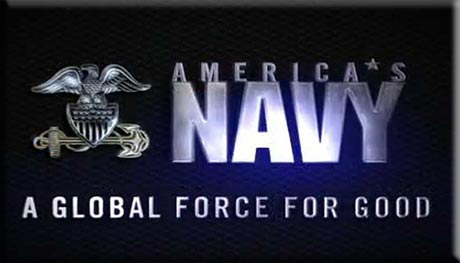
NAVSPEAK aka U.S. Navy Slang
Irish Pennant: Loose thread on uniform.
Iron Bottom Sound: A term used to this day to describe the waters between Guadalcanal, Savo Island, and Florida Island in the Solomon Island chain, because of the large number of ships sunk in that area during World War II. It is considered by the Navy as sacred waters, and, every year during the commeration of the Naval Battle of Guadalcanal, a ship in the area will put out to sea, and drop a wreath in the area to honor the dead.
INT WTF: Letters Pronounced Individually. INTerrogative What The F@@k. See WTFO. Usually used in a text/teletype medium where WTFO is over voice communications.


Just for you MARINE
JETDS: Joint Electronics Type Designation System, used to categorize the nomenclature of electronic equipment.
JJ DID TIE BUCKLE: Mnemonic for the 14 leadership traits: Justice, Judgement, Dependability, Initiative, Decisiveness, Tact, Integrity, Enthusiasm, Bearing, Unselfishness, Courage, Knowledge, Loyalty, Endurance.
JOB: Junk On the Bunk, a formal inspection of gear that takes place in the squad bay where the gear is placed on the rack in a predesignated order. Also known as “Things On the Springs”.

Naval Aviation Squadron Nicknames
HSC-3 - Helicopter Sea Combat Squadron THREE: “Merlins”
Naval Air Station North Island - San Diego, California
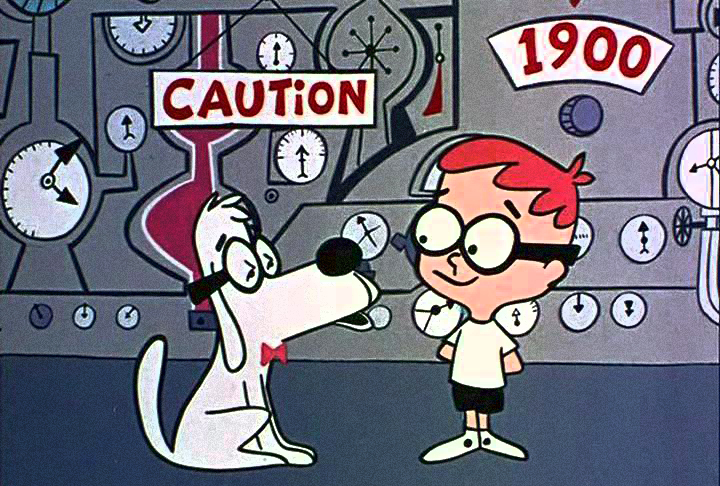
Science & Technology

Seeing the Milky Way in a stunning new light - Spectacular 167-million pixel map of the galactic centre is revealed
• Will the universe end in a BIG RIP? Expert suggests its rate of expansion could end up tearing everything we know apart
• Is the world really warming up? Planet may be no hotter at the end of the century than it is now, claims controversial report
• Ultrafast new technology is 100 times faster than current systems using your LIGHTS
• Ancient Earth was pummelled with meteors
Daily Mail

The Strange, Mysterious or Downright Weird

A weird world of warlike ants and well-armored termites has been found preserved in amber.
The insect fossils, entombed in Burmese amber from Myanmar, date back 99 million years for the ants and 100 million years for the termites. The fossils reveal the startling sociality of these insects very early in their development. The ants cluster together with others of their kind and, in one case, engage in pitched jaw-to-jaw battle. The termites show different body adaptations for soldiers and workers, a hallmark of specialized roles.
“Up until now, the oldest [termite] soldiers that we knew about were 20 million years old, so we have 80 million years longer of a record,”, said study researcher Philip Barden.
Live Science (02/17/2016)


SONG FACTS

65 Songs You Will Never Be Able To Listen To The Same Way Again
Buzzfeed 
Photo: Aerosmith “I Don’t Want to Miss a Thing” was originally written for Celine Dion.
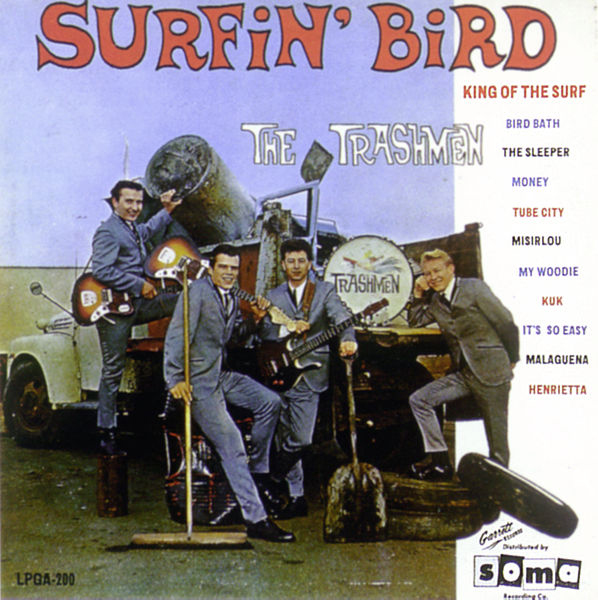
“Surfin' Bird” - The Trashmen
Album: Surfin' Bird
Released 1963 
This is a medley made up of the choruses of two R&B classics by the '60s doo-wop group The Rivingtons: “The Bird Is the Word”  and “Papa-Oom-Mow-Mow”
and “Papa-Oom-Mow-Mow”  . The brainchild of Trashmen drummer Steve Wahrer, the song was a quirky and consumable hit, boldly combining surf music with novelty R&B.
. The brainchild of Trashmen drummer Steve Wahrer, the song was a quirky and consumable hit, boldly combining surf music with novelty R&B.
The Trashmen were a garage band from Minneapolis, which isn't surfing territory. Despite critical acclaim, they managed just one more minor hit before disbanding in the late '60s: the 1964 #30 “Bird Dance Beat”  .
.
When this became a hit, The Rivingtons were awarded writing credit for the song, since it was based on their compositions. This was a huge financial benefit, as they receive royalties every time the song is used in a movie, TV show or commercial. The Trashmen claimed that they heard The Rivingtons songs through cover versions played by a Wisconsin band called the Sorenson Brothers, and insisted that “Surfin' Bird” was an original recording.
The Trashmen were left with the performance royalties, which while certainly not scraps, were far less lucrative. The band says that for their first payment, they each received a check for $1.88, but they eventually got a lump sum of $4,500 each. This was all they got until the mid-'80s, when they filed a lawsuit against the company that had bought the recording.
How did a band from Minnesota create a surf-rock classic? The quartet soaked up the sunshine and sounds of California when they took a road trip there in spring, 1963. Returning home, they incorporated the surf sound into their shows when they played local gigs, and eventually worked up "Surfin' Bird." That summer, they played an early version of the song at Chubb's Ballroom in Maple Grove. A local disc jockey named Bill Diehl introduced them to George Garrett, who ran a record label called Garrett Records. The band recorded the song at Kay Bank Studio in Minneapolis, and Diehl played it on his WDGY "Battle of the Bands" segment. Issued on Garrett Records, the song became a regional hit in November, and was picked up by the larger Soma label.
A full album was quickly recorded, and the band was dispatched on a tour, traveling the country in a Chevy Greenbrier van. They played 292 gigs that year, but couldn't get higher than #30 with any of their subsequent releases. In 1967, they called it quits as their sound fell out of favor.
One of more bizarre American Bandstand moments took place on the January 4, 1964 episode of the show, when Trashmen lead singer (and drummer) Steve Wahrer performed the song solo. A perplexed Dick Clark introduced the performance by calling “Surfin' Bird“ one of the most “strange and unusual” songs of 1963, before introducing the band, which was just Warner doing a chicken-like dance as he gamely lip-synched along.
After the performance, Clark questioned him about the "strange sounds" he created, and Wahrer said, “Probably I was watching too many Tarzan movies”. He made a point to Clark that the band wrote the song themselves.
Wahrer's bandmates didn't join him because the band's management wouldn't pay to fly them to Philadelphia.
The Ramones gave this song new life when they recorded it on their 1977 album Rocket to Russia. Other artists to cover the song include The Cramps and Silverchair.
An entire 2008 episode of the TV show Family Guy revolves around this song. In the episode, which is entitled “I Dream of Jesus”, Peter Griffin goes to a '50s diner where the song plays and he declared it his favorite of all time. When the manager removes the song from the jukebox because it's from the '60s, Peter procures it from him, then plays it constantly at home. He proceeds to drive everyone around him absolutely nuts with the song and with his constant reminders that “the bird is the word”.
A campaign to make this the 2010 UK Christmas #1 resulted in the song selling 68,000 in the week before the 25th of December. As a result it achieved its highest UK chart position to date of #3 behind Matt Cardle's “When We Collide”.
After the episode was screened on BBC2 in April 2009, this song entered the top 75 of the UK charts for the first time. (thanks, Brandon - West Nyack, NY)
The song has been used in the movies E.T., Full Metal Jacket and Pink Flamingos, and also in the video game Battlefield Vietnam. Pee Wee Herman sang it in the movie Back To The Beach. It was also used in popular commercials for California Coolers, and in a spot for Pringles.
The song was released shortly before the assassination of U.S. President John F. Kennedy, so it took longer than usual to climb the chart. It reached its U.S. chart peak on January 25, 1964.
The Trashmen reunited from time to time in the '70s and '80s to perform various one-off gigs. Lead singer Steve Wahrer died of esophageal cancer in 1989 at age 47, but the other three members started playing again in 2007. In 2014, they released an album called Bringing Back the Trash with guitarist Deke Dickerson.
Rolling Stone / Billboard / Song Facts / Wikipedia
The Rivingtons: All Music / Billboard / Wikipedia
Image: “Surfin' Bird (album)” by The Trashmen

Trivia
● Gold is the most malleable metal.
● The transistor invented by Bell Telephone Laboratories spawned pocket-sized radios.
● China suffered the worst two earthquakes in history, killing 830,000 in 1556 and 750,000 in 1976.

A Test for People Who Know Everything
Name the only vegetable or fruit that is never sold frozen, canned, processed, cooked, or in any other form except fresh.
● Answer for People Who Do Not Know Everything, or Want to Verify Their Answer University of Illinois Extension.edu
Answer to Last Week's Test
Name the only sport in which the ball is always in possession of the team on defense, and the offensive team can score without touching the ball?
Answer: Baseball MLB

Joke of the Day
A blind man wanders into an all girls biker bar by mistake.
He finds his way to a bar stool and orders some coffee.
After sitting there for awhile, he yells to the waiter, “Hey, you wanna hear a blonde joke?”
The bar immediately falls absolutely silent. In a very deep, husky voice, the woman next to him says, “Before you tell that joke, sir, I think it is only fair - given that you are blind - that you should know five things:”
“1. The bartender is a blonde girl with a baseball bat.”
“2. The bouncer is a blonde girl.”
“3. I’m a 6 foot tall, 175 lb. Blonde woman with a black belt in karate.”
“4. The woman sitting next to me is blonde and a professional weightlifter.”
“5. The lady to your right is blonde and a professional wrestler. Now, think about it seriously, Mister. Do you still wanna tell that joke?”
The blind man thinks for a second, shakes his head, and mutters, “No… Not if I’m gonna have to explain it five times.”
Pun of the Day
Hold on to your plate during dinner to get a well balanced meal.



























